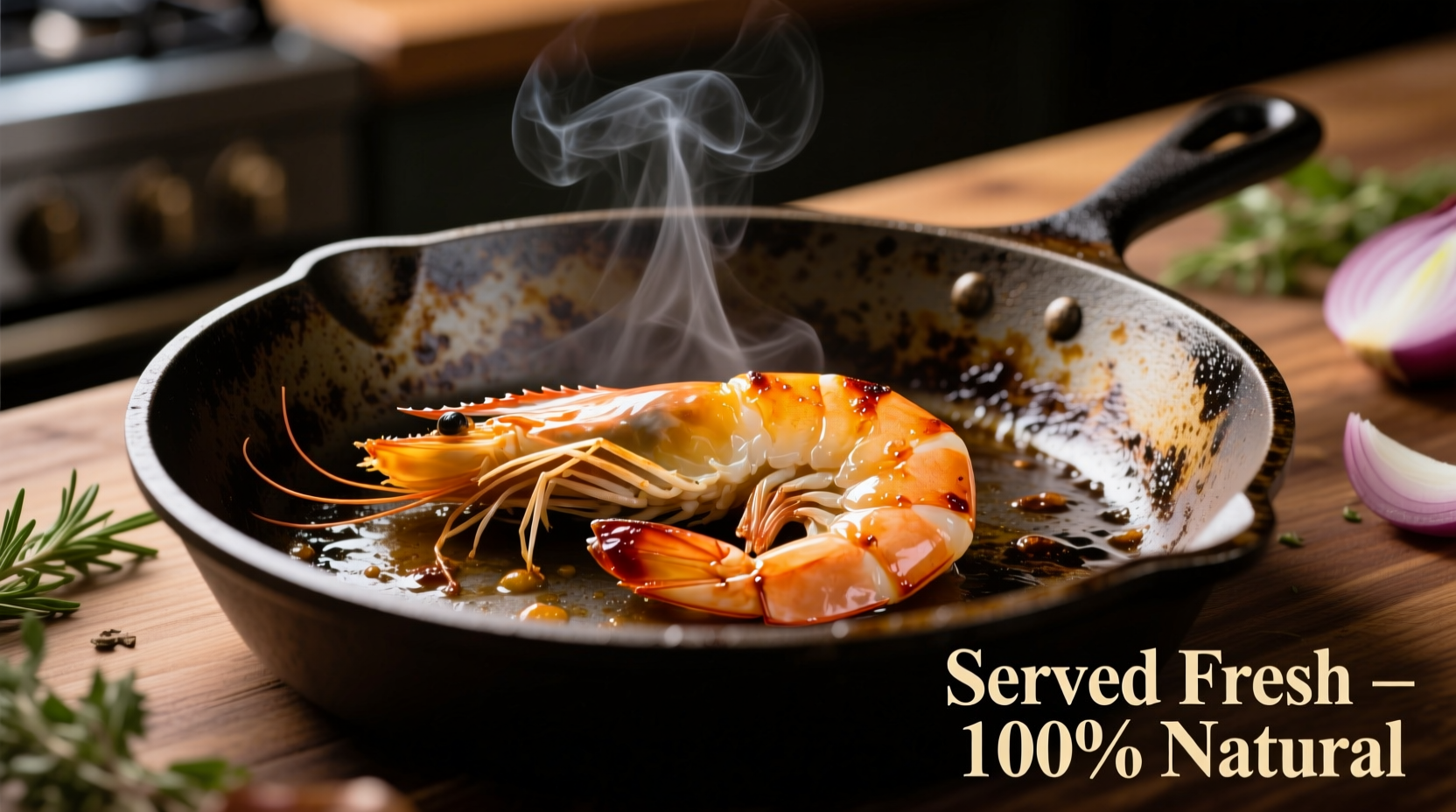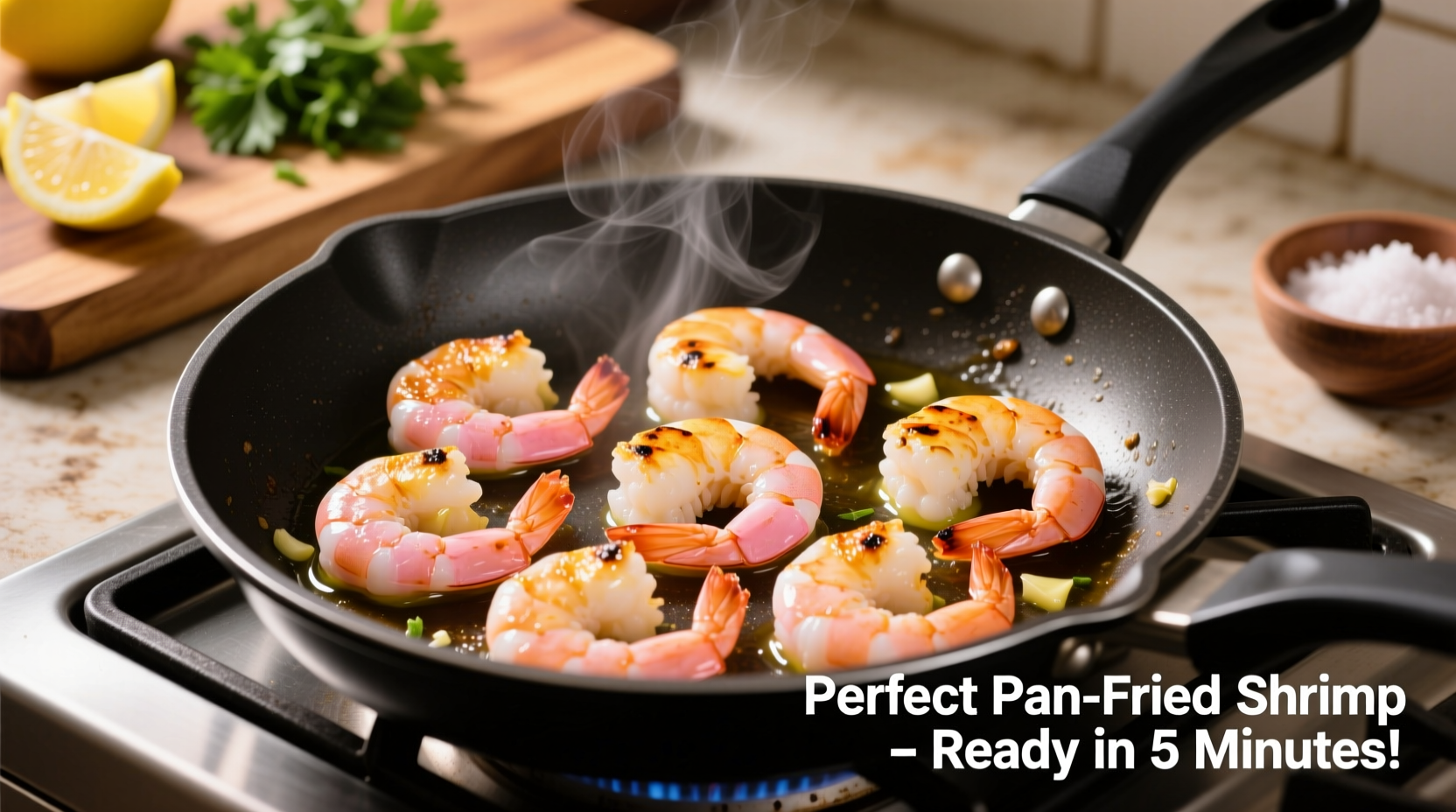Many home cooks waste precious time thawing shrimp only to end up with rubbery, overcooked results. The truth? Cooking frozen shrimp straight from the freezer is not only possible but often produces superior texture. As professional chefs have known for years, the rapid temperature transition locks in moisture while preventing that dreaded chewiness. Let's explore the science-backed method that transforms frozen shrimp into a perfect pan-seared dish in under 10 minutes.
Why Cooking Frozen Shrimp Works Better
Contrary to popular belief, thawing shrimp before cooking often leads to moisture loss and uneven texture. When frozen shrimp thaw at room temperature, ice crystals melt and escape from the muscle fibers, leaving the shrimp dry before it even hits the pan. The USDA Food Safety and Inspection Service confirms that cooking seafood directly from frozen is safe and maintains better quality when proper techniques are used.
| Shrimp Size | Weight per Piece | Recommended Cooking Time | Internal Temperature |
|---|---|---|---|
| Small (51-60 count) | 0.3-0.4 oz | 3-4 minutes | 145°F (63°C) |
| Medium (41-50 count) | 0.4-0.5 oz | 4-5 minutes | 145°F (63°C) |
| Large (31-40 count) | 0.5-0.7 oz | 5-6 minutes | 145°F (63°C) |
| Jumbo (21-30 count) | 0.7-1.0 oz | 6-7 minutes | 145°F (63°C) |
Your Pre-Cooking Checklist
Before you start cooking frozen shrimp in a pan, gather these essentials:
- Pan selection: Heavy-bottomed stainless steel or cast iron (8-12 inches)
- Oil choice: High smoke point oil like avocado (smoke point 520°F) or refined olive oil
- Temperature control: Instant-read thermometer for precise heat management
- Shrimp prep: Pat frozen shrimp dry with paper towels to remove surface ice
- Seasoning: Kosher salt and freshly ground black pepper (add other seasonings after cooking)

Step-by-Step Cooking Process
1. Pan Temperature is Critical
Heat your pan over medium-high heat for 3-4 minutes until it reaches 375°F (190°C). Test by sprinkling a few drops of water—if they sizzle and evaporate immediately, you're ready. This precise temperature prevents the shrimp from steaming in their own moisture.
2. Oil Application Technique
Add 1 tablespoon of oil and swirl to coat the entire surface. The oil should shimmer but not smoke. For best results when cooking frozen shrimp in a pan, use just enough oil to create a thin film—excess oil causes splattering when the frozen shrimp hits the surface.
3. Shrimp Placement Strategy
Arrange shrimp in a single layer without crowding—work in batches if necessary. Place them flat-side down first for maximum sear. Never toss frozen shrimp directly from the bag; take 30 seconds to pat them dry with paper towels to remove surface ice crystals that cause steaming.
4. Timing and Flipping Protocol
Cook undisturbed for 2 minutes to develop a golden crust. Flip shrimp only once using tongs—never a fork which pierces the delicate flesh. Cook 1-2 minutes more until opaque and firm to the touch. The total time varies by size as shown in our cooking time chart above.
Avoid These 3 Common Mistakes
Mistake #1: Overcrowding the Pan
When too many frozen shrimp cook in a pan at once, they release moisture that lowers the pan temperature, causing steaming instead of searing. Cook in batches with space between each piece for proper browning.
Mistake #2: Adding Seasonings Too Early
Salt draws out moisture—wait until after cooking to add most seasonings. For best flavor when cooking frozen shrimp in a pan, add salt only to the side that will touch the pan initially, then finish with additional seasoning after cooking.
Mistake #3: Overcooking for "Safety"
Many home cooks continue cooking shrimp past 145°F due to food safety concerns. The FDA confirms that shrimp is safe at 145°F internal temperature, which takes just 5-7 minutes from frozen. Use an instant-read thermometer to prevent rubbery texture.
Flavor Enhancement Options
After cooking, elevate your shrimp with these professional chef techniques:
- Garlic Butter Finish: Add 2 tbsp butter, 2 minced garlic cloves, and lemon zest during the last minute of cooking
- Spicy Cajun Style: Toss cooked shrimp in 1 tsp Cajun seasoning and a squeeze of fresh lime
- Simple Mediterranean: Finish with chopped parsley, lemon juice, and a drizzle of extra virgin olive oil
When Thawing Is Actually Recommended
While cooking frozen shrimp in a pan works perfectly for most applications, there are specific scenarios where thawing first is preferable:
- When using delicate preparations like ceviche
- For stuffing or rolling shrimp
- When incorporating into cold salads
- If your shrimp are exceptionally large (21-25 count)
For these situations, the FDA recommends thawing shrimp in the refrigerator for 12-24 hours or using the cold water method (submerging in sealed bag in cold water for 10-15 minutes).
Serving Suggestions for Perfect Results
For optimal texture, serve immediately after cooking. Pair your perfectly pan-cooked frozen shrimp with:
- Citrus-herb quinoa for a complete protein-rich meal
- Garlic sautéed asparagus for a classic combination
- Lemon-dill sauce for enhanced flavor without overpowering
- Over whole grain pasta with cherry tomatoes
Remember that shrimp continues to cook slightly from residual heat after removal from the pan—pull them out when they're just shy of perfect to avoid overcooking.
Frequently Asked Questions
Can I cook frozen cooked shrimp in a pan?
Yes, but reduce cooking time to 2-3 minutes total. Since they're already cooked, you're just reheating and adding sear. Watch carefully to prevent rubberiness—add a splash of broth or wine to keep them moist during reheating.
Why does my frozen shrimp stick to the pan?
Sticking occurs when the pan isn't hot enough before adding shrimp or when flipping too soon. Ensure your pan reaches 375°F before adding oil, then wait until shrimp release naturally from the surface (about 2 minutes) before flipping. Properly heated stainless steel creates a natural non-stick surface through the Leidenfrost effect.
How do I prevent frozen shrimp from becoming rubbery?
Rubbery texture comes from overcooking or improper temperature control. Cook at precise 375°F, never above 400°F, and remove shrimp at 140°F internal temperature (they'll reach 145°F from residual heat). Smaller shrimp need less time—follow our size-based timing chart for perfect results every time.
Can I use this method for other frozen seafood?
Yes, this technique works well for scallops and small fish fillets too. Adjust timing based on thickness—scallop muscles are denser than shrimp, requiring 1-2 minutes longer. For thicker fish like salmon, we recommend thawing first to ensure even cooking through the center.











 浙公网安备
33010002000092号
浙公网安备
33010002000092号 浙B2-20120091-4
浙B2-20120091-4